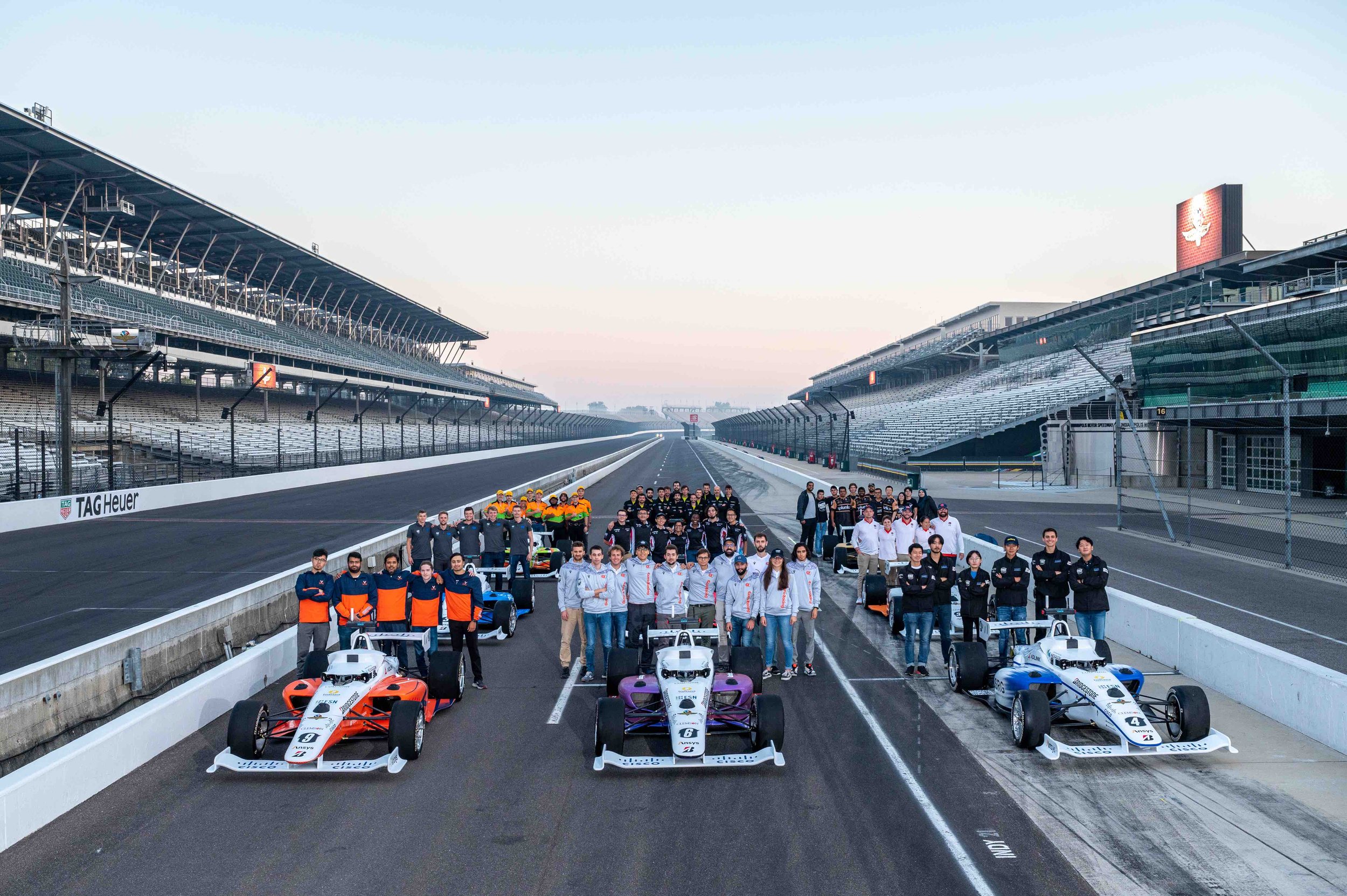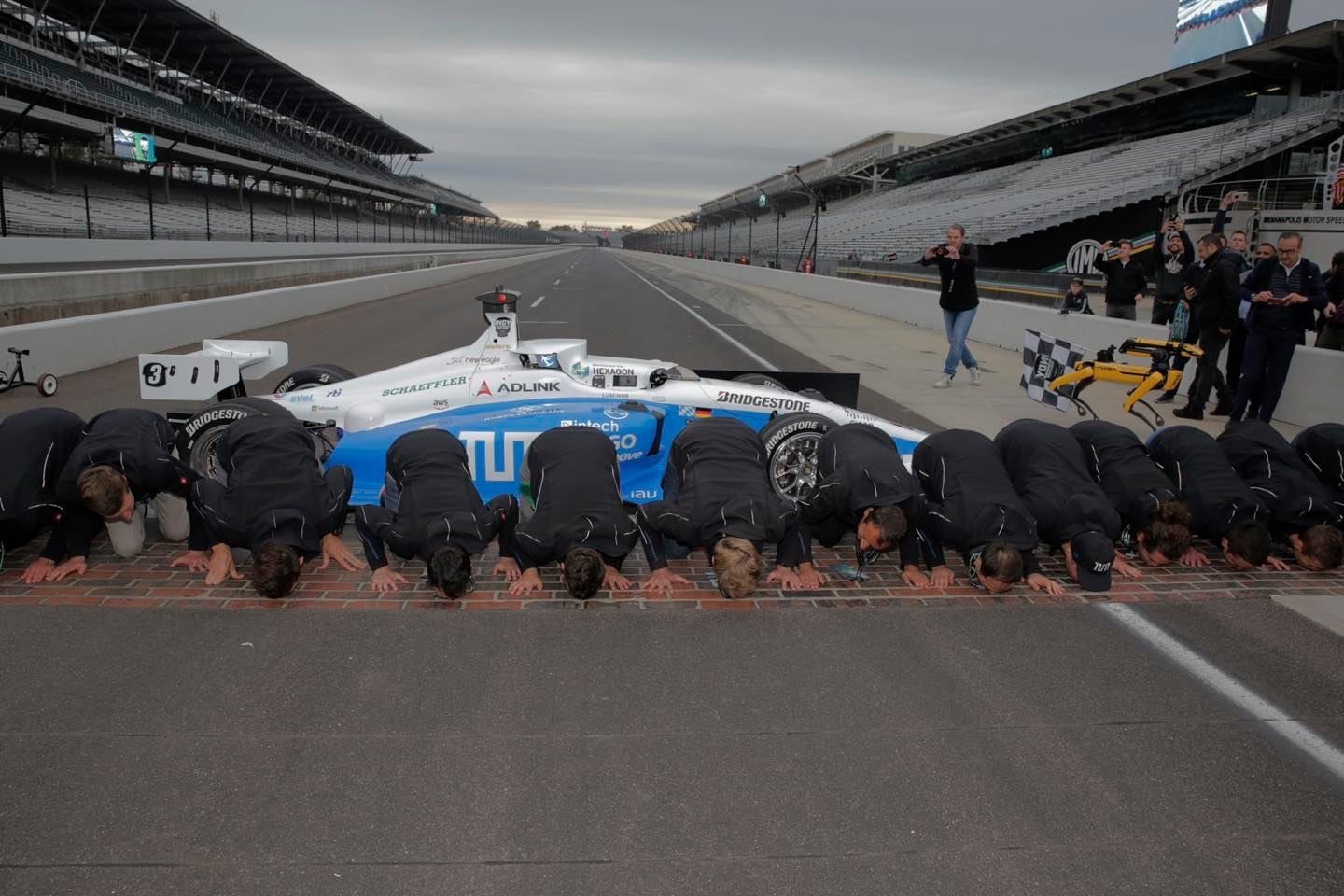The Leaderboard, December 2021 IAC Newsletter
Message from Energy Systems Network President & CEO
Happy New Year!
October 23, 2021, went down as a momentous day in history, not only at the Indianapolis Motor Speedway (IMS), but also for autonomous vehicle innovation. Through the Indy Autonomous Challenge Powered by Cisco, we enabled the advancement of technology in the realm of autonomous mobility and we did it through a prize competition that served as a platform for university students to excel in Science, Technology, Engineering and Math (STEM). We congratulate TUM Autonomous Motorsport, from the Technische Universität München (Germany) for winning the competition at IMS and taking home the $1 million grand prize.
The nine IAC teams representing 21 universities that competed at IMS proved that they can advance autonomous technology by setting world records with high-speed laps, showcasing the long-stated IAC goals of enhancing safety and performance. As Dallara CEO Andrea Pontremoli said, the technology in the racecars was not the innovation; the innovation was the algorithms designed by the IAC university teams to power the Dallara AV-21 racecar.
Now, we advance from the biggest stage in motorsports at IMS, to the biggest technology stage in the world, CES® 2022. And, as part of CES, our IAC university teams will take it to the next level with a high-speed, head-to-head passing competition at the Las Vegas Motor Speedway with the Autonomous Challenge @ CES on January 7, 2022. The Consumer Technology Association (CTA), which each year organizes CES, plays a central role in advancing and showcasing technologies worldwide. Thank you to Gary Shapiro, Karen Chupka and their amazing team at CES® 2022, we can’t think of a better partner for this next step in the competition.
These history-making competitions are necessary to achieve the IAC goals of advancing technology that can speed the commercialization of fully autonomous vehicles and deployments of advanced driver-assistance systems (ADAS). We will show the world that if this can be done at high-speed, these enhancements will lead to increased safety and performance in motorsports, as well as all modes of commercial transportation.
We are excited to see what the 19 universities, from 8 countries forming 9 teams, will achieve as they seek to compete at the Autonomous Challenge @ CES and once again make history. As the teams say “See you in Vegas.”
Paul Mitchell
President & CEO
Energy Systems Network
THE IAC AT CES® 2022
Watch the LIVE STREAM of the Autonomous Challenge @ CES
January 7, 2022 Autonomous Challenge @ CES
12:00 - 4:00 P.M. PST
The IAC will have a major presence at CES® 2022 in Las Vegas, where it will exhibit in West Hall Booth #5029. Serving as a co-exhibitor with the IAC is the Indiana Economic Development Corporation (IEDC), a significant partner of the IAC. Additionally, the IAC will be holding a number of events at CES® 2022.
January 3, 2022 - CES Unveiled, Mandalay Bay, Shorelines Exhibit Hall, 5 - 8:30 p.m.
January 4, 2022 - IAC Press Conference, Mandalay Bay Palm A, 4-4:30 p.m.
January 6, 2022 - Indy Autonomous Challenge: Accelerating AV Talent and Commercialization Panel, West Hall Rooms 216-218, 11-11:40 a.m.
January 7, 2022 - Autonomous Challenge @ CES at the Las Vegas Motor Speedway, 12-4 p.m. PST.
IAC Teams
In the last Leaderboard, we highlighted the nine university teams which competed in the Indy Autonomous Challenge Powered by Cisco on October 23, 2021, and are seeking to compete again on January 7, 2022, in the Autonomous Challenge @ CES. Complete profiles of all of the IAC teams can be found on the IAC website teams page.
IAC Sponsors and Contributors
Throughout the IAC, the primary organizer of the IAC, Energy Systems Network(ESN), has been supported by a consortium of public and private partners and sponsors including the Indiana Economic Development Corporation (IEDC), Clemson University’s International Center for Automotive Research (CU-ICAR), Juncos Hollinger Racing, and Dallara USA, manufacturer of the IAC Dallara AV-21. Many of those sponsors and contributors and a few new partners will be supporting the IAC at the Autonomous Challenge @ CES. We thank them for their support.
Premier Sponsors: Luminar and Technology Innovation Institute
Sponsors and Contributors: IEDC, T-Mobile (Halo), Driveblocks, Apex.ai, Juncos Hollinger Racing, Dallara USA and CU-ICAR
Today, the IAC announced its new sponsors. Read here.
DRIVING INNOVATION
What's inside the Dallara AV-21, used by all IAC teams, that makes it the most advanced autonomous racecar.
Edge Computing
The rugged high-performance computers digest massive amounts of data to make split-second decisions based on millions of data points it reads at the racecar’s high-speeds. The computers are designed to handle the shock, vibration and temperature demands of autonomous racing.
Perception Sensors
The racecars use lidars, radars and cameras to detect and track other racecars and obstacles on and around the track. Data from these sensors are captured and “fused” in real time to provide a complete picture.
Lidars
Three Lidar sensors are on the Dallara AV-21. They send out millions of laser pulses per second to measure the precise distance (via time-of-flight) to racecars and obstacles and give the racecar a 3D view of the world.
Radars
The Dallara AV-21 has three electronically scanning radars that measure the position and speed of other racecars and obstacles on the track. The difference between radar technology and lidar and camera technology is that radars are able to measure the speed directly.
Cameras
Six cameras on the Dallara AV-21 allow the computer to “see” other racecars and obstacles on the track and are arranged to give a full 360-degree view around the racecar. The cameras are capable of capturing more than 60 images per second.
GPS
GPS units show the exact location of the racecar down to the centimeter and measure acceleration and rotation rates.
Other Vehicle Sensors
The Dallara AV-21 includes numerous low-level sensors that measure wheel speeds, tire temperature, suspension position and more. These sensors give real time feedback on the condition and health of the racecar.
Drive-by-Wire
The Dallara AV-21 does not have a steering wheel. The drive-by-wire (DBW) system is the mechanism in the racecar that physically makes it steer, brake, turn and hit the gas pedal.
TUM AUTONOMOUS MOTORSPORT
Winner of the Indy Autonomous Challenge Powered by Cisco on October 23, 2021
TUM Autonomous Motorsport - Technische Universität München (Germany) won the inaugural Indy Autonomous Challenge Powered by Cisco at IMS and took home the $1 million grand prize. The team participated in an IMS tradition for winning teams of “kissing the yard of bricks.”
What Government & Industry Leaders Say About the IAC
Indiana Governor Eric Holcomb: “What is so important about today at the IAC is that we in Indiana will prove that we overcome all challenges and we invest in our talent and infrastructure and want to be a true leader in the entrepreneurial arena - and a beacon for innovation.”
Andrea Pontremoli, CEO, Dallara: “The technology was available… the difference is the fact that we now, because of this [IAC], have the algorithms to use that technology in an innovative way. Competitions like this can enable a lot of people to think in a different way – even myself. Companies themselves would have said earlier that this was impossible, but the students didn’t know it was impossible, and they did it.”
Gary Shapiro, CEO, Consumer Technology Association (CTA): “CTA represents more than 1,500 tech companies, and the focus on innovation is creating and defining the future. The most powerful technology we have today is AI. The IAC is a day you will talk about to your children and grandchildren.”
What Media Say About The IAC
Wards Auto - Read: “Self-driving technologies from Aptiv and Waymo will be demonstrated at CES in January, as they have in the past, but the most action-packed event scheduled for January is likely to be the autonomous race-car challenge that will take place at the Las Vegas Motor Speedway Jan. 7.”
National Public Radio (NPR) - Listen. “Just getting here with a super fast self-driving car is an accomplishment…learning to move from simulation to the racetrack and implementing new algorithms into each car. For NPR news, I'm Samantha Horton in Indianapolis.”
AFP - Watch: “The winner was not a driver but an algorithm."
The Wall Street Journal - Read: Thousands of drivers have raced their cars across the finish line at the Indianapolis Motor Speedway over its 111-year history. The Indy Autonomous Challenge will be the first time racecars do it on their own.
TechCrunch - Read: “The IAC brought together students from 21 universities from nine countries, who were charged with programming driverless racecars to compete in a high-speed autonomous race.”
Axios - Read: “The Indianapolis Motor Speedway helped autonomous vehicle researchers reach a new milestone over the weekend by hosting its inaugural driverless car race.”
Ars Technica - Read: “No driver, no problem. The IAC competition is, in many ways, the spiritual successor of the DARPA Grand Challenge, a robotics race from the early 2000’s won by Stanford University— led by famed computer scientist Sebastian Thrun, now an advisor to the IAC.”
IndyStar - Read: “Never in his wildest dreams would Carl Fisher have envisioned the day the Indianapolis Motor Speedway would see a drone deliver the checkered flag to a robotic dog, who would wave it while driverless cars sped around the Racing Capital of the World at times more than 150 mph.”
To read more stories about IAC in the News, visit the IAC website media page.








